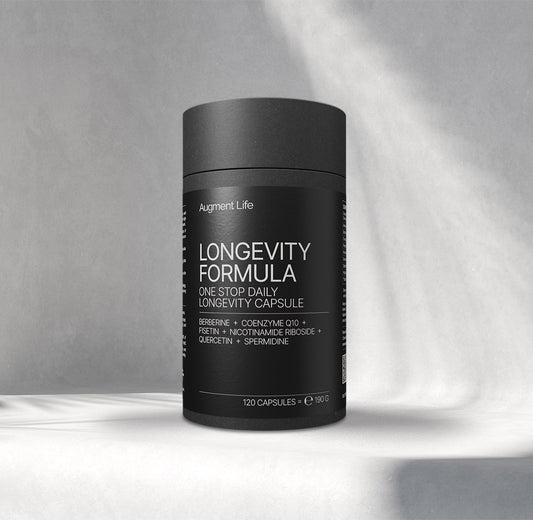What is it? Why do we need it? Where can we find it?
What is it?
Evidence based research is exactly what it sounds like, it is studies often by scientists and academics, which uses experiments to understand the validity of an idea. Because the experiments have outcomes, regardless of being good or bad, the outcomes serve as evidence. When enough of these are done, particularly to a "golden standard", using a double-blind sample group where one half of the group gets the real supplement and another get's a placebo, but the researchers don't know which group had which supplement, this produces creditable data that can then be used to support or discredit the hypothesis about the supplement.
Why do we need it?
In the world of modern medicine, many preventative treatments include dietary supplements. For example, one of the most common supplements taken in the world is Vitamin D. Many people in the world have a Vitamin D deficiency because they do not spend enough time in sunlight, which is the primary way that we get it. We know people need to take Vitamin D supplements because thousands of studies have proven the efficacy of doing so over and over.
For every new treatment or beneficial effect that we might achieve by changing what we consume and how we live, there are usually studies that have been conducted which tell us more about those effects and if we should believe the hype.
You may have found yourself reading a newspaper or magazine article talking of some huge discovery that will be a health game changer. For example, about the harms of sitting in a chair too much. Or how looking at a phone screen late at night, due to blue light exposure, can decrease the quality of your sleep. But what you might not have paid attention to is that these articles sometimes, but not always, reference a study which proves the claims of the article. It's important, before taking any of the tips these sources of information suggest as fact, to check that there is evidence that supports the claims. All too often, content creators and journalists stretch the positive or negative outcomes or just don't have room in their story to mention the fine print. Most of the time, however, we can at least expect a link in the article to the study they are referencing. And this is where things get interesting!
As long as the study can be found, you can take the fact checking into your own hands and decide if there is something to learn from the research. Or if there was more talk than walk in the interpretation of the data. And for the very brave souls out there, you can even choose your own adventure and search through the millions of studies available on the Internet to find any other studies that are of interest to you.
Where can we find it?
One of the most reliable sources of evidence based research is PubMed. An online database of scientific research projects, PubMed is an excellent resource for finding evidence based research. Claims are often made about the benefits or harms of things we eat, lifestyles we choose, the environment we live in, and of course – the supplements we take. But when those claims are made without referencing the study that proves them, or almost just as bad, when these statements exaggerate the credibility of a study's finding, either because the sample size wasn't large enough, the demographics were biased, or any number of other variables which might allow for convenient results, readers are misled.
For better or worse, most people are not interested in digging through technical research which is no simple errand. But it's important for anyone willing to take their health into their own hands and that wants to prevent health issues from happening, rather than waiting for symptoms of diseases and conditions that might be easier to avoid in early stages, to know how to break down the facts from the pseudo-science.
What are some red flags to look for?
Without spending hours and hours leafing through research, it is still possible to know how to test if a study passes muster.
Citations
For one thing it's better to have many confirming studies rather than just one. PubMed's literature is full of citations linking up various studies as citations. If while looking into a purported scientific claim no studies or only just one can be found which is not cited by other publications, this is something to watch out for.
Humans or Animals?
Setting aside ethical concerns, is the study based on lab animals (mice or monkeys), another life-form, or humans? A typical stepping stone of the research hierarchy is to begin with microorganisms (yeast, bacteria, etc), sometimes this step is skipped altogether and research begins with mice. If the results with mice are promising than in some cases human volunteer groups are formed. This is a huge simplification of the process, but it's important to note that new areas of research rarely start with tests on humans. There are many scientifically relevant reasons for following this process, and sometimes a discovery with mice can be connected to a similar result in humans, but definitely not always. So use caution and check.
Sample Size
The number of subjects tested, or the sample, in a study, whether mice or humans, is another important factor. How many people were tested? Ten? Forty? Ten thousand? This can make a huge difference.
Statistically, what happens once to one test subject may not happen the same to another. Many studies, especially with humans, are on small test groups of less than one hundred people. This is for good reason, it is expensive and time-consuming to organize large groups of people willing to be part of an experiment. While thirty independent test subjects already helps as a minimal basis for statistically relevant findings, it can easily be problematic. Generally, the bigger the sample size the better.
Margins of the Results
An often over-looked detail in the results of a study are the margins of change in the results. Many test results are measuring a difference, the test subjects may be expected to have high values in their blood markers, or a qualitative estimate, will be given by test subjects for how they rate the change in their own state.
Countless studies show changes of 3-6%, in some cases this could be groundbreaking news, in others, we are talking barely noticeable, a three percent change in one's energy levels throughout the day are negligible. This is essentially a margin of error. A positive change will depend from one study to another. When evaluating the credibility of a study consider the change value in the findings and think to yourself if this is enough for you to get excited or if you need to see bigger definite results.
Demographics
When a study has been made with people, the next thing to consider is who were the participants. Not much information can be found here most of the time, but the age, and gender of the subjects should be available. Sometimes lifestyle habits are also including i.e. smoker vs. non-smoker, exercise history, etc. Understanding how you yourself compare to the subjects of the study and help to determine if the results are relevant to your own pysiological condition











